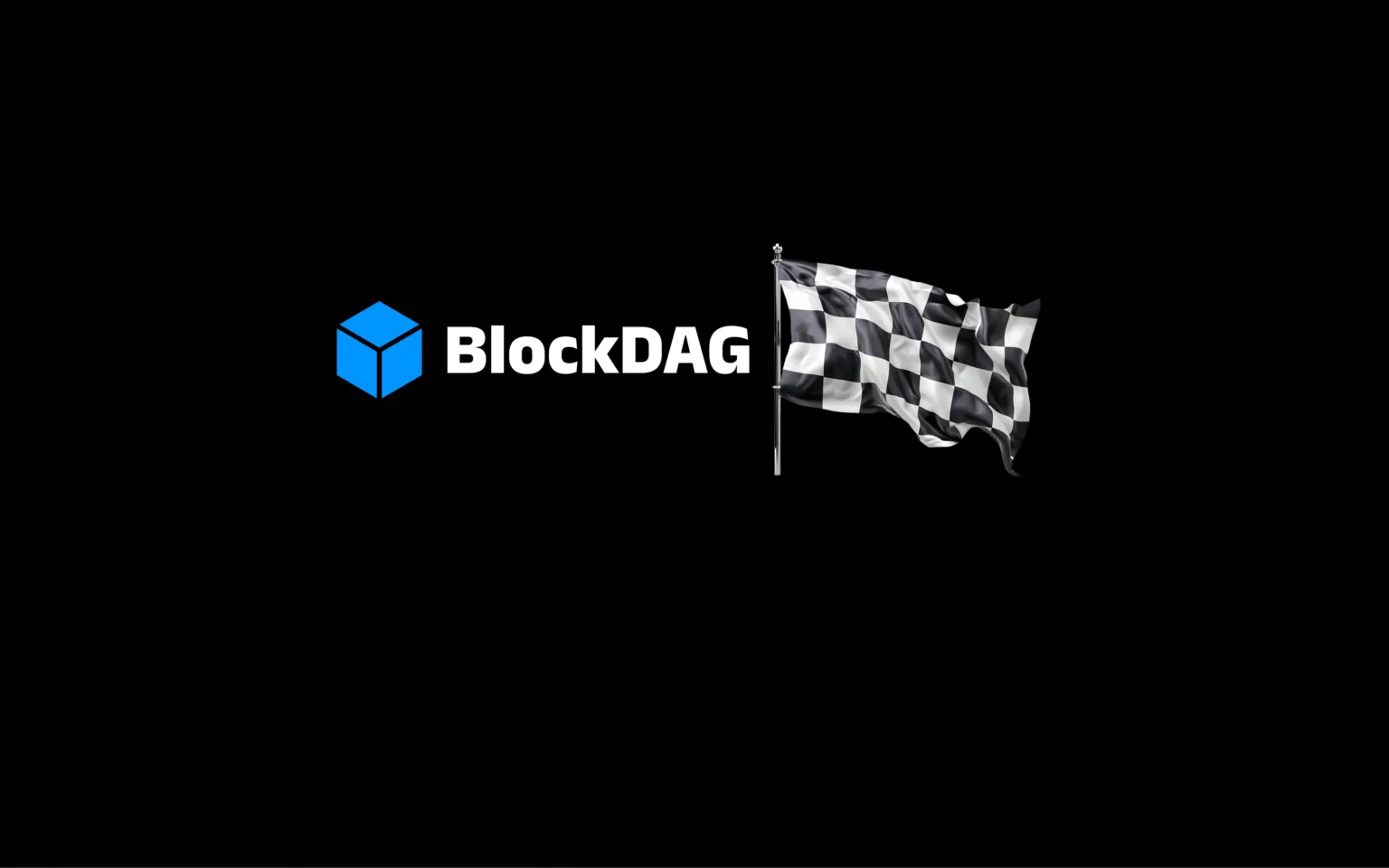Blockdag is an effective innovation in a fast-developing world of distributed ledger technology. Unlike the conventional blockchains, blockdag reorganizes the interconnection of blocks to increase speed, efficiency and consensus. It is finding momentum in fintech and cryptocurrency development on the cutting edge in need of higher throughput.
Enterprises and developers are adopting blockdag due to the potential it has to execute transactions simultaneously without affecting security. This model is conducive to large transaction volumes, minimised confirmation times and network bottlenecks. A blockdag is scalable and provides an attractive substitute to next-gen ledgers.
This article provides the reader with the clarity and actionable understanding by covering architecture, benefits and real-life uses of blockdag. It explores technicality and is easy to understand. In the end, knowledge of blockdag can allow innovators to develop more resilient, future-proof DLT solutions.
What Is BlockDAG and How It Differs from Blockchain
A blockdag (block-directed acyclic graph) converts the linear format of a chain into a graph, so that many blocks can be validated concurrently. Compared to a blockchain which requires consecutive blocks, blockdag allows several branches that meet safely, speeding up the transaction throughput.
This freedom allows blockdag to verify an extensive number of blocks at once, minimizing latency and network congestion. New cryptocurrency platforms are embracing blockdag as an alternative to the limiting blockchains and provide a more scalable solution to the problem.
Blockdag has faster and more reliable propagation with clever conflict resolution and interpropagation. Blockdag has a unique architecture that promotes decentralization without compromising on performance, hence being a compelling option to use in upcoming financial applications and high-volume ledger systems.
Key Advantages of BlockDAG Architecture
Blockdag model has a number of brilliant advantages. First, its parallel validation highly enhances throughput which can do many transactions per second as compared to the traditional chains. Second, blockdag also enhances confirmation times: since several blocks are propagated simultaneously, confirmations are received sooner.
Third, its elastic structure causes orphaned or dead blocks, which is useful in the utilization of network resources. Fourth, blockdag is resilient – when one branch performs worse the other healthy ones continue making progress and the system will remain strong.
The five, blockdag is more decentralized, since the nodes can be able to add block independently without the need to race or contend to add a block to a single chain. Such benefits make blockdag the best choice in the implementation of applications that require speed, scalability, and equality without compromising decentralization.
How BlockDAG Ensures Security and Consensus
Blockdag security depends on the prudent design of consensus and conflict resolution. Instead of having one longest-chain rule, blockdag applies algorithms in which block weight or score is determined by counting the number of blocks that refer to it. This approach will make sure that confirmations are made to valid blocks in time.
The operators insert information, such as time stamps, signatures and references to earlier blocks making it hard to alter. In multiple branches, attackers have to exceed honest nodes, which is much more difficult than crushing a linear chain.
The architecture of Blockdag also helps to overcome typical blockchain attacks, such as double-spend or selfish mining. Basically, blockdag combines novel graph organization and strict consensus logic to ensure a high level of security and open the door to high performance.
Real-World Applications and Use Cases for BlockDAG
Blockdag is gaining momentum in a variety of applications in the real world. The cryptocurrency networks IOTA, with the Tangle (based on a Tangle) or Avalanche, with its DAG-inspired consensus (also called a blockdag) show that blockdag can facilitate micro-transactions and decentralized finance at scale.
It is an industry leader in IoT ecosystems, where many small transactions take place at a high rate and have to be confirmed quickly. Blockdag is useful in reducing latency and cost by being parallel to enterprise networks with a high volume of cross border payments.
The blockdag structures are also implemented in smart-contract platforms to handle the programmable transactions more effectively. With blockdag, supply-chain systems benefit through its throughput and resilience in the process of the tracking of massive datasets. Blockdag provides an attractive basis of scalable and secure ledgers across industries, including finance, IoT, supply chain.
Potential Challenges and Considerations with BlockDAG
Pressing blockdag is difficult despite its advantages. Its graph structure makes it complex-programmers have to code sophisticated algorithms to score, rank and resolve conflicts, which makes it expensive to develop.
It is more challenging to visualize and debug a blockdag than a linear chain. The nodes with resource constraints might have a challenge in sustaining the full graph which could be a barrier to decentralization. Backward compatibility with the existing blockchain tools and wallet can need a considerable degree of adaptation.
Further, upgrades or hard forks in blockdag systems should treat graph divergence carefully. Knowledge of such obstacles can make sure that practitioners design blockdag in a way that strikes the right balance between innovation and clarity and infrastructure capacity.
Optimizing BlockDAG Performance and Adoption Strategies
To leverage blockdag, developers are recommended to begin with modular protocol layers, which means to decouple consensus logic and data propagation (to simplify updates). Prune the graph and periodically checkpoint to restrict the amount of memory consumed by nodes so that they do not get overwhelmed with historical data.
Integrate lightweight clients that authenticate pertinent subgraphs, rather than complete blockdags. Encourage incremental implementation by creating blockdag compatible with existing standard blockchain tools which will facilitate a smooth change.
Provide education on using blockdag to communities by documenting and making APIs available, assisting developers learn more about the benefits and structure of blockdag. Provide test nets to foster experimentation.
The blockdag systems enable performance and wide support through scaling up across industries through resource use optimization, facilitation of integration and familiarity of developers.
BlockDAG vs. Traditional Blockchain: A Comparative Perspective
An obvious contrast brings out the merits of blockdag. Historical blockchain pins sequential block chain-order- one new block can only be made after the previous block is confirmed, slowing the pace. By contrast, Blockdag can add multiple blocks concurrently, which increases throughput.
Blockchains frequently result in forks and orphaned blocks, which are a waste of work; blockdag is designed to tolerate branch merging gracefully, minimizing the amount of wasted work. Classical schemes are based on mining competitions (or validator rotation); blockdag will assign validation in a natural manner by use of graph referencing.
But blockchains are simpler in structure and standardize the tooling whereas blockdag requires more technical complexity. To the point, blockdag is a high throughput extension of DLT, whereas blockchains are still proven and simpler to implement and the correct choice depends on the context.
BlockDAG Future Outlook and Industry Impact
In the future, blockdag has the potential to change the future of the decentralized systems. Blockdag has the potential to provide the speed and efficiency required in 5G and edge computing as the demand for real-time payments, IoT scaling and the usage of DLT increases.
New standards and industry consortia are looking at blockdag innovations, which could make interoperable ecosystems. Graph-based validation and load balancing can be further optimized by being integrated with AI and data analytics. Blockdag can be used by governments and businesses experimenting with CBDCs or digital identity systems as a source of scalable transaction infrastructure.
As it continues to grow, the path of blockdag is one that indicates that it would become the basic technology in the next generation of decentralized innovation- the one that would combine speed, security, and versatility.
Conclusion
Blockdag is at the tip of the iceberg in terms of scalable and efficient architecture as distributed ledgers are developed. Blockdag is able to overcome the weaknesses of the traditional blockchains by adopting parallel validation, high security, and scalable graph structure.
The complexity of development and infrastructure requirements is offset by the merits of speed, decentralization and throughput, which puts it in the limelight of choice in most industries.
Through intelligent architecture, performance optimization, and increasing ecosystem support, blockdag may be the fuel behind the next generation of DLT-based innovation – not just crypto and finance, but IoT and more.
Also Read About: Wunonovzizpimtiz: The Complete Guide You Need in 2025
Frequently Asked Questions
What is a blockdag?
A blockdag, or block-directed acyclic graph, is a distributed registry scheme that links blocks in a graph, rather than in a single chain, which allows validation to proceed concurrently and has greater throughput.
How does blockdag improve scalability?
Blockdag supports several parallel blocks that accelerate processing and decrease the confirmation periods and hence the system can scale effectively without serial bottlenecks.
Is blockdag more secure than blockchain?
Blockdag security is based on referencing and graph-based consensus. It also reduces common blockchain attacks like forks or selfish mining through validation distribution over branches.
What challenges come with blockdag?
Blockdag adoption necessitates intricate block-ordering and block-scoring algorithms, and it consumes additional resources to store the graph, and might not work well with existing blockchain tooling.
Where is blockdag used today?
Blockdag is implemented in the real world in IOTA through the Tangle and in Avalanche through the consensus model. It is also deployed in IoT, smart contracts, supply chain tracking, and high-throughput payment systems.


